Ceramic flooring
1. GENERAL CONTEXT
One of the most outstanding uses of ceramics is the interior flooring of the houses, highly demanded by both bourgeois and humble families. Although we have examples from antiquity, such as Roman mosaics, ceramic flooring or hydraulic tile that many of us remember became popular from the nineteenth and twentieth centuries.
With the growth of the modern city, the preference for ceramics in pavements responds to:
+ The needs of greater hygiene and comfort.
+ Its insulation capacity.
+ The decorative character that also showed the social and economic status of the owners.
+ The revaluation of the decorative arts by Art Nouveau, a style that developed between the late nineteenth and early twentieth centuries.
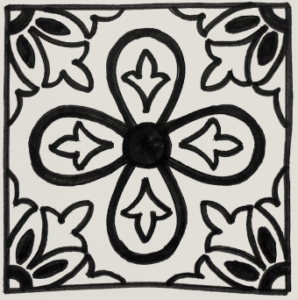
After the fire of 1875, the old huts began to be replaced in the Cabanyal by brick houses considering these factors and ceramics were used intensively, in pavements, plinths and facades.
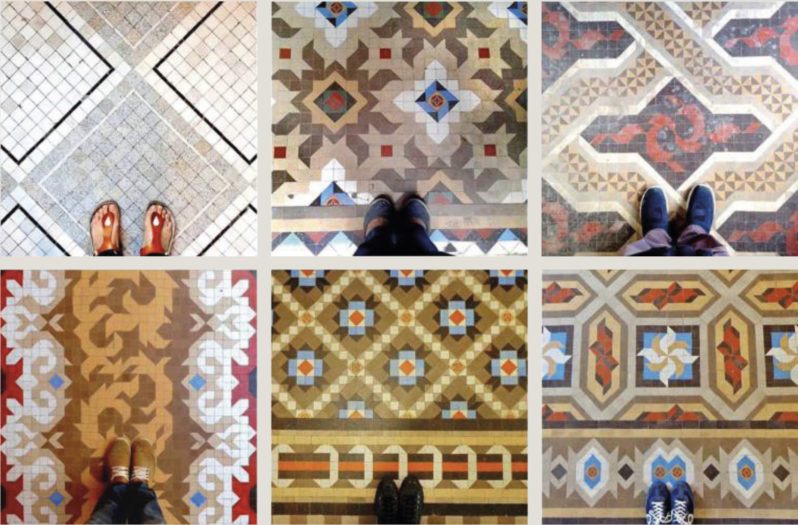
2. PRODUCTION / CHARACTERISTICS
The Valencian ceramics industry supplied the local and international markets, with a lot of prominence in South America. Most of them were small family bakeries or large factories located far from the urban center (such as in Manises, Burjassot or Onda).
Among the most appreciated types of ceramics of the time, two stand out: the Nolla mosaic and hydraulic tile, which are often confused with each other. The difference is found in the material and the manufacturing process. In 1860 the factory of Miquel Nolla, who had imported English technology, emerged in Meliana. It was based on the production of geometric pieces of a very resistant material (porcelain stoneware), of small size and in a great variety of shapes and colors.
The Nolla family soon became a famous and expensive product, which is why we find them mainly in bourgeois housing. Families who could not afford this expense resorted to hydraulic pavement, which was more affordable because it did not go through the furnace (a hydraulic press is used). Although mosaics were made with small pieces very similar to the Nolla, it is more common to find square tiles of 20×20 cm.

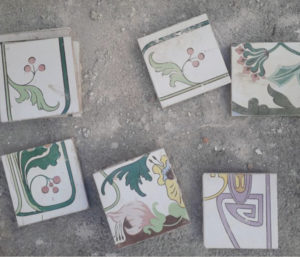
3. EXAMPLES OF THE CABANYAL
There were at least two ceramics factories, specialized in hydraulic tiles, located in El Cabanyal: José Burgos, at 111 José Benlliure Street, and Vicente Noguera, at number 4 on the same street. In many homes, in different areas or cities, we can find the same pavements because the factories worked with catalogs and mass-produced.
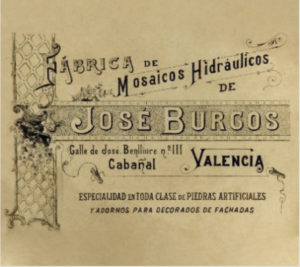
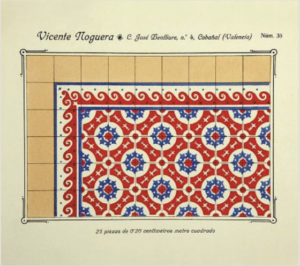
C/ de la Reina, 121
It stands out that through a very limited number of pieces in similar colors, 3 different geometric models are composed for three rooms. The floors on the ground floor are much simpler than those above, this could give clues about the usefulness or inhabitants of the rooms on one floor and the other.
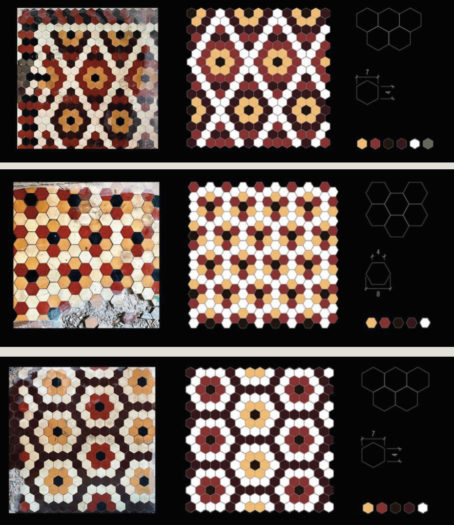
Text w